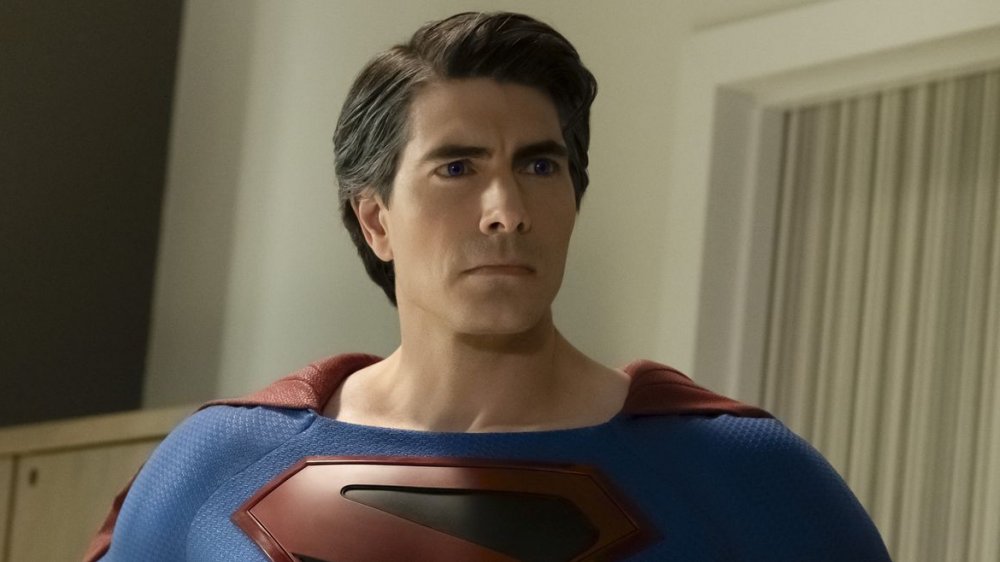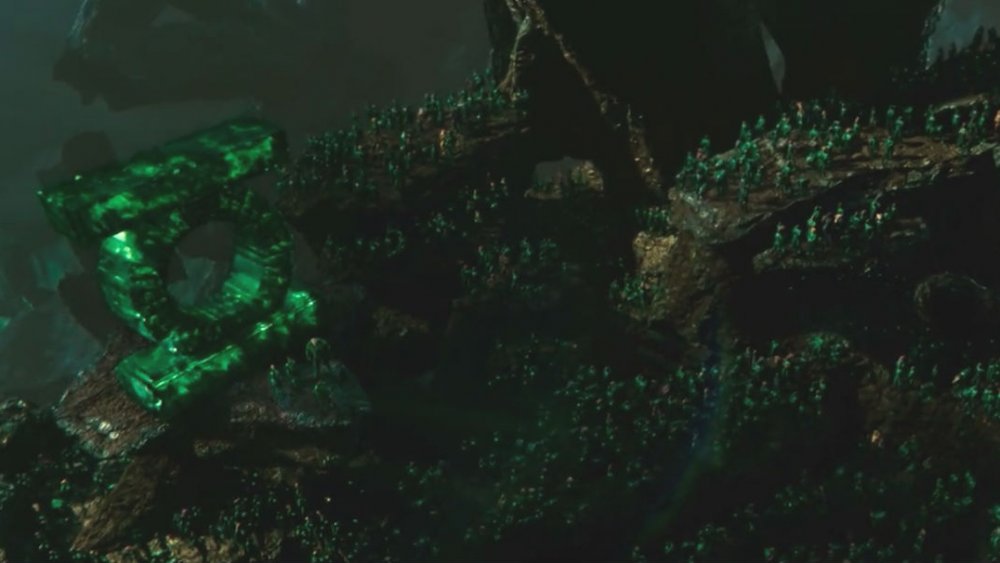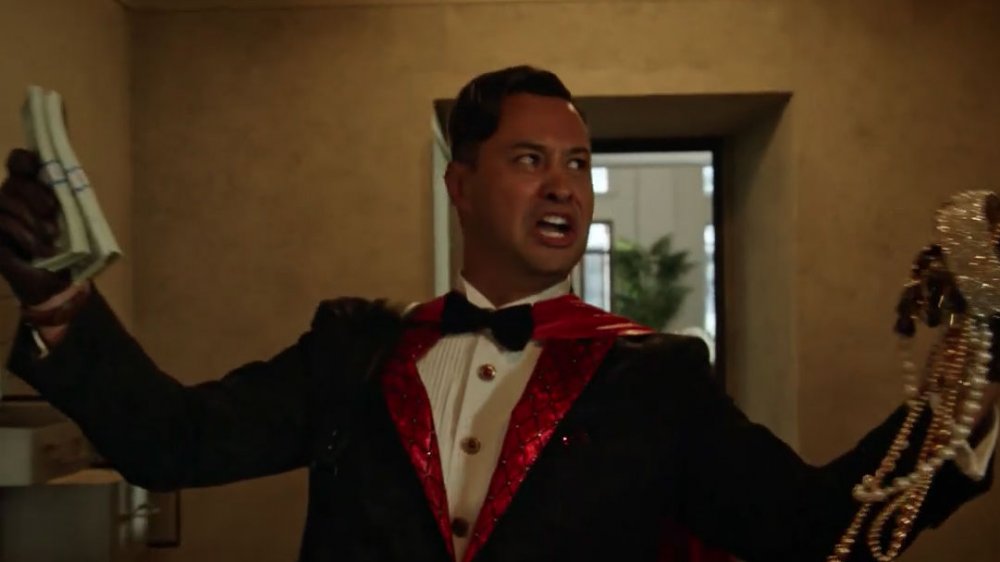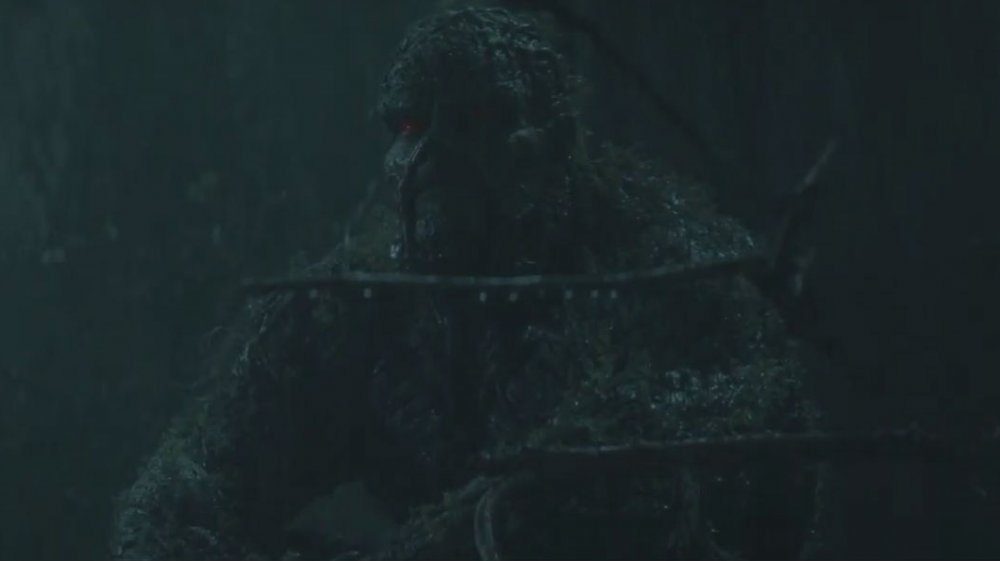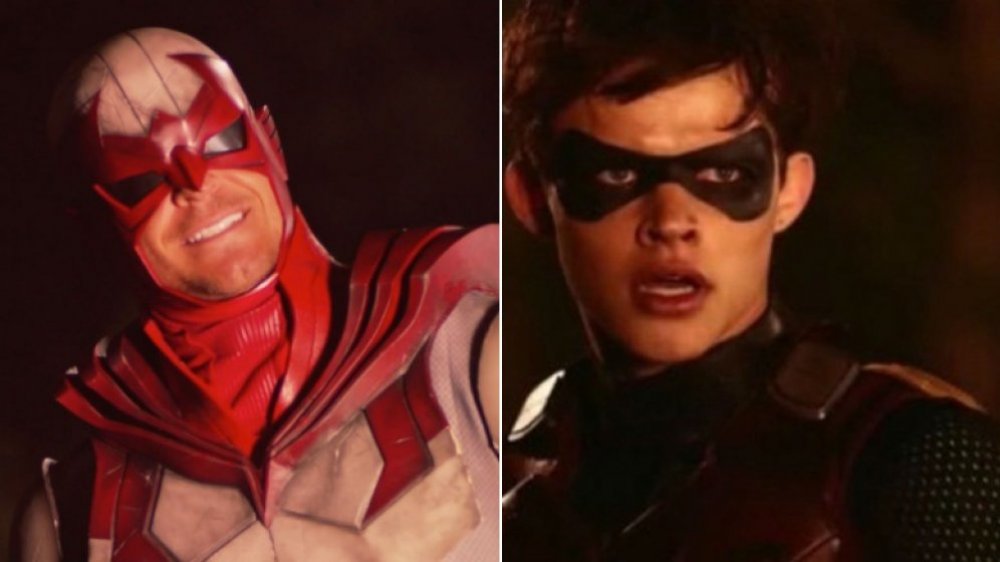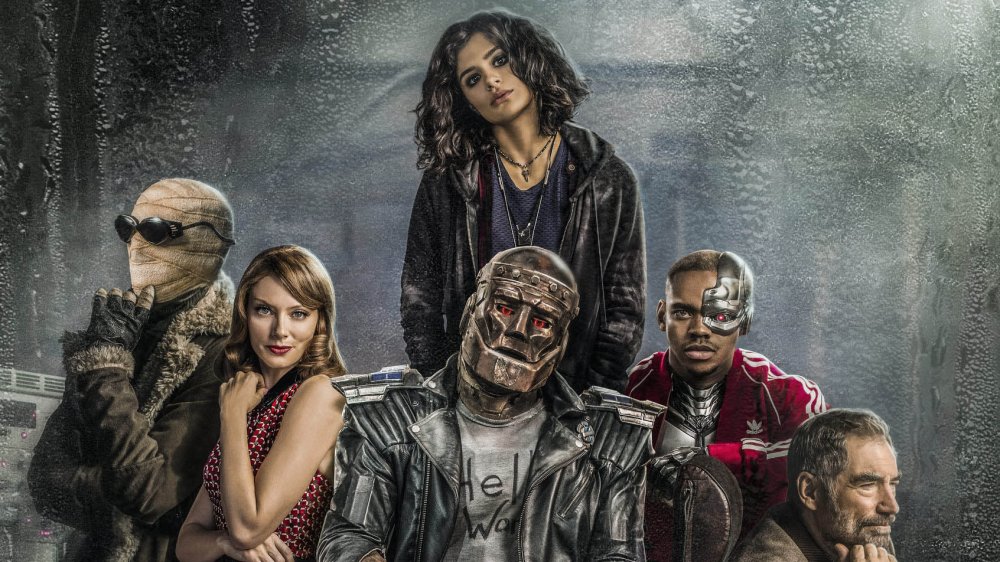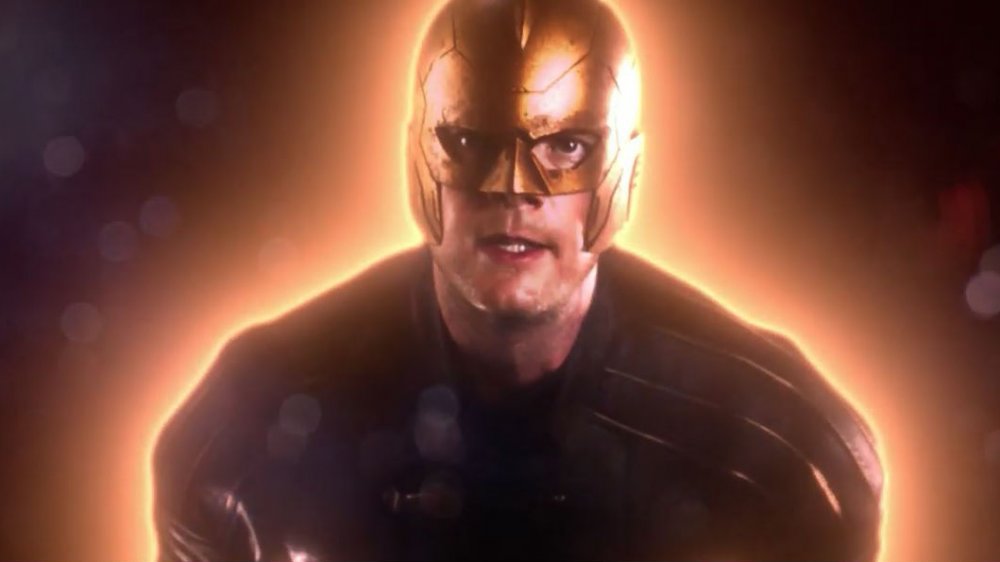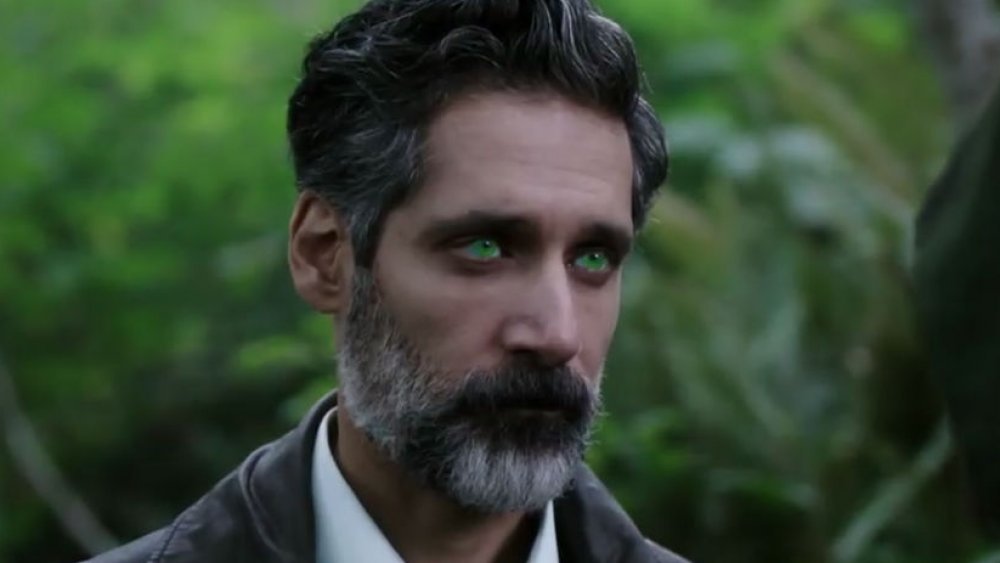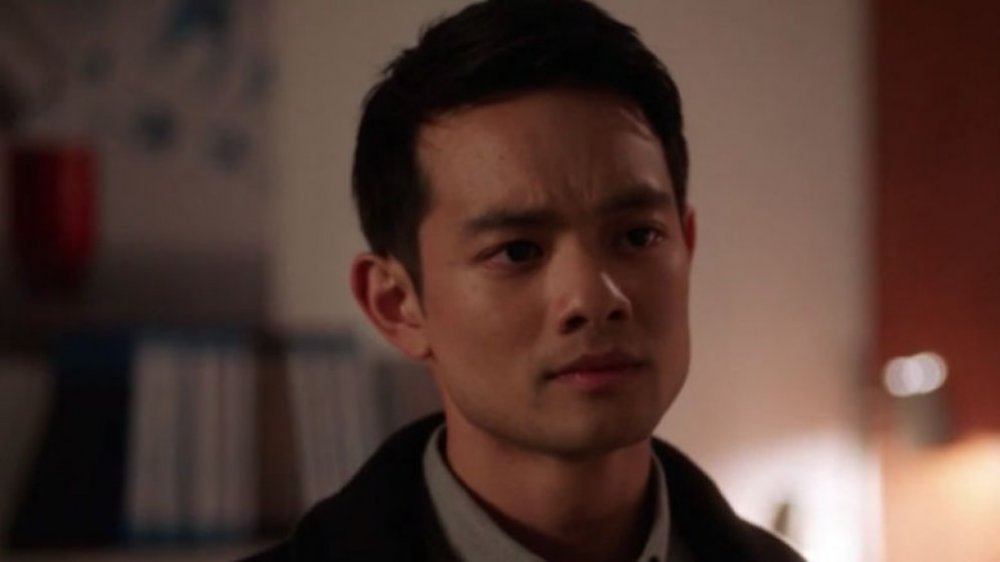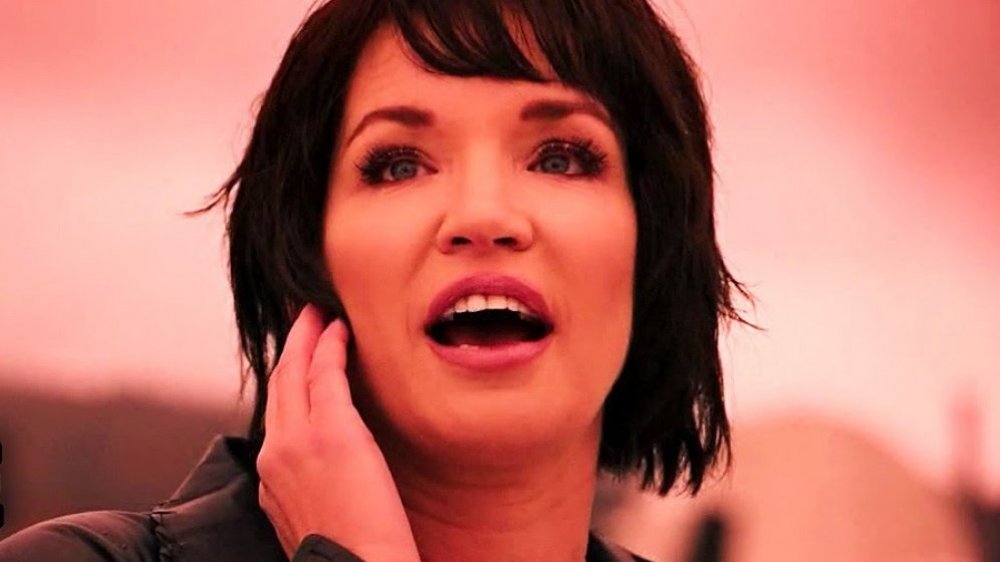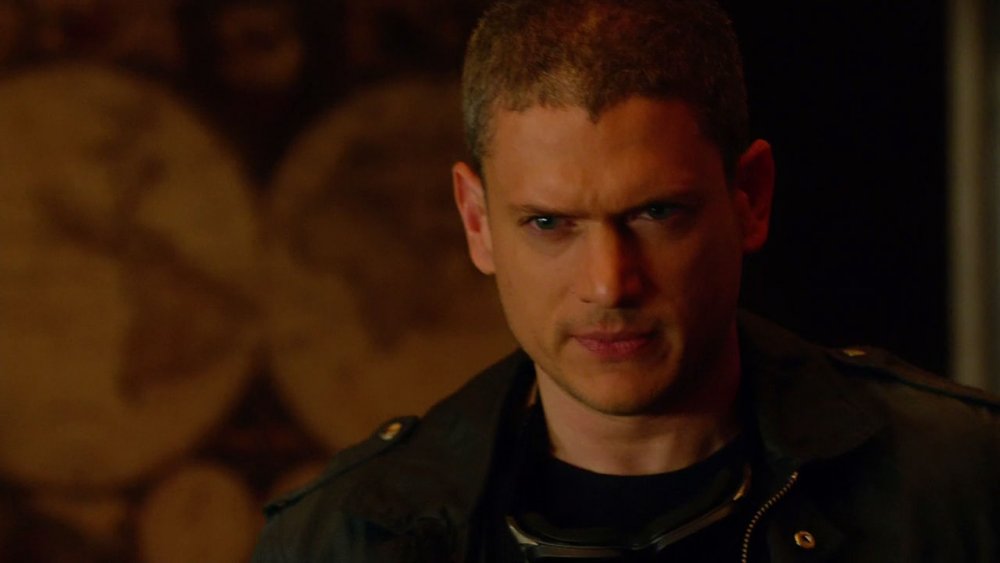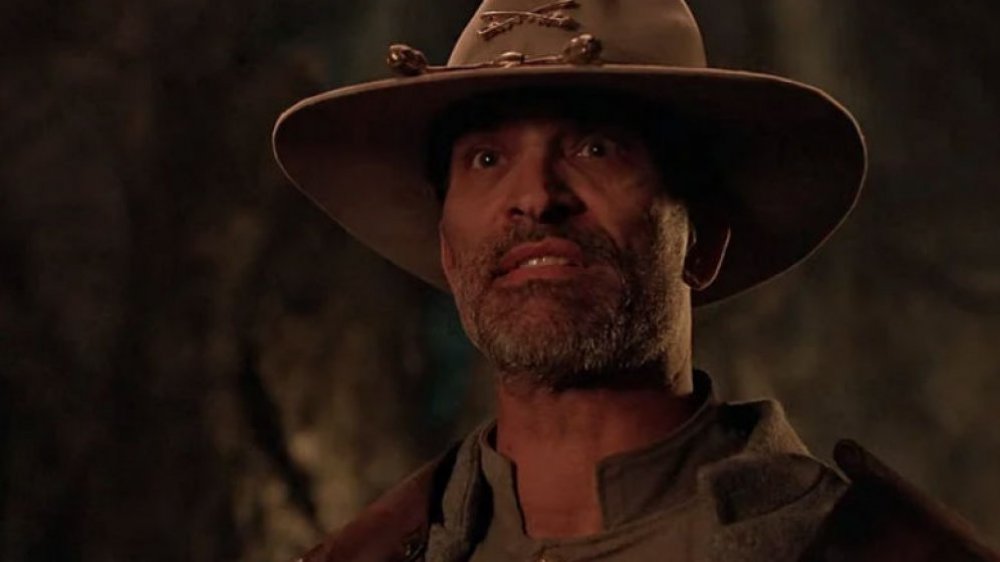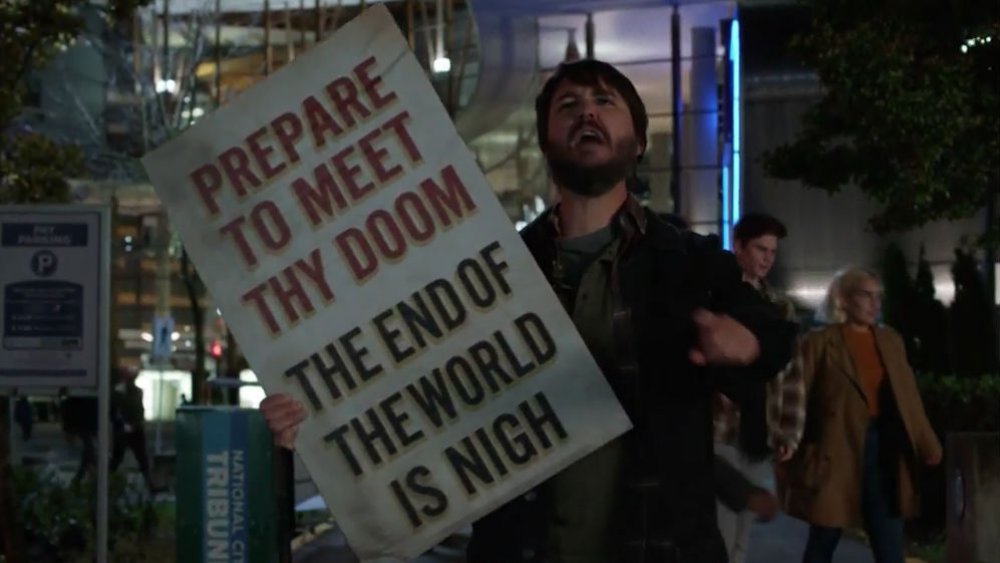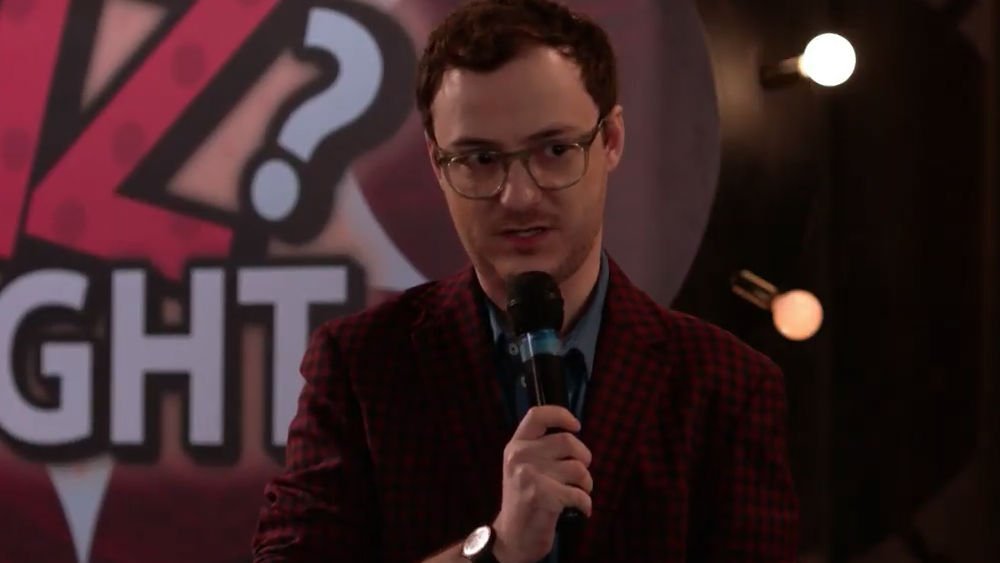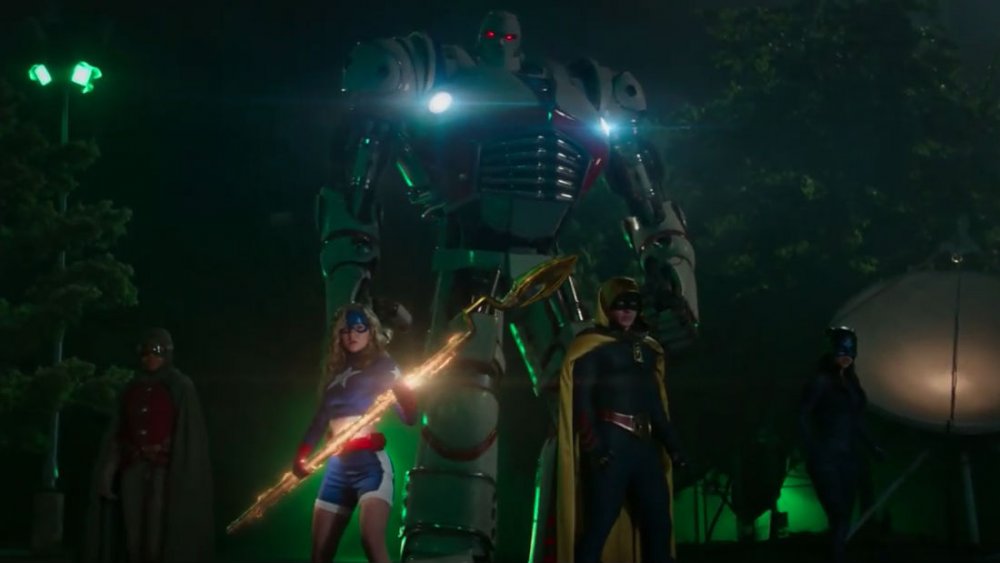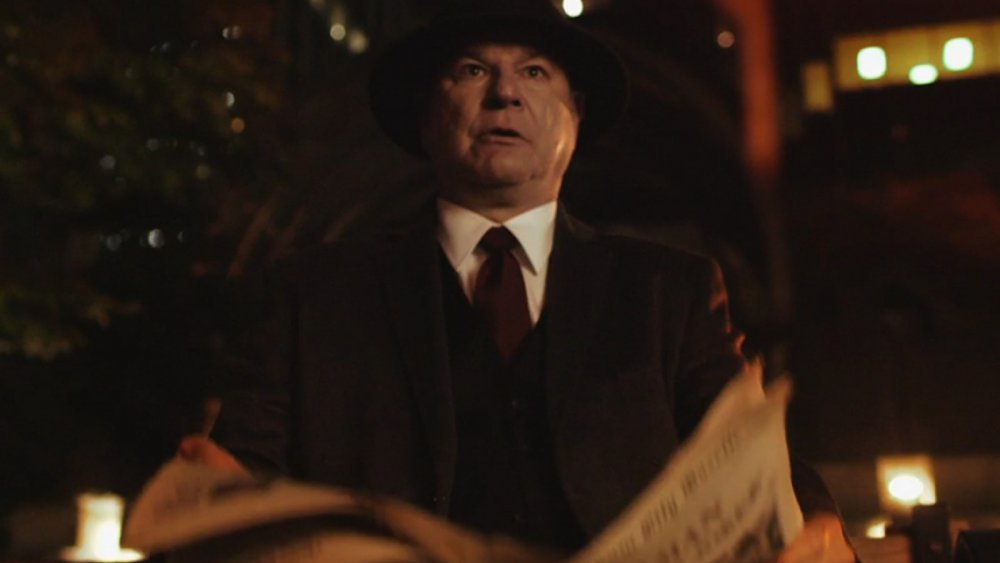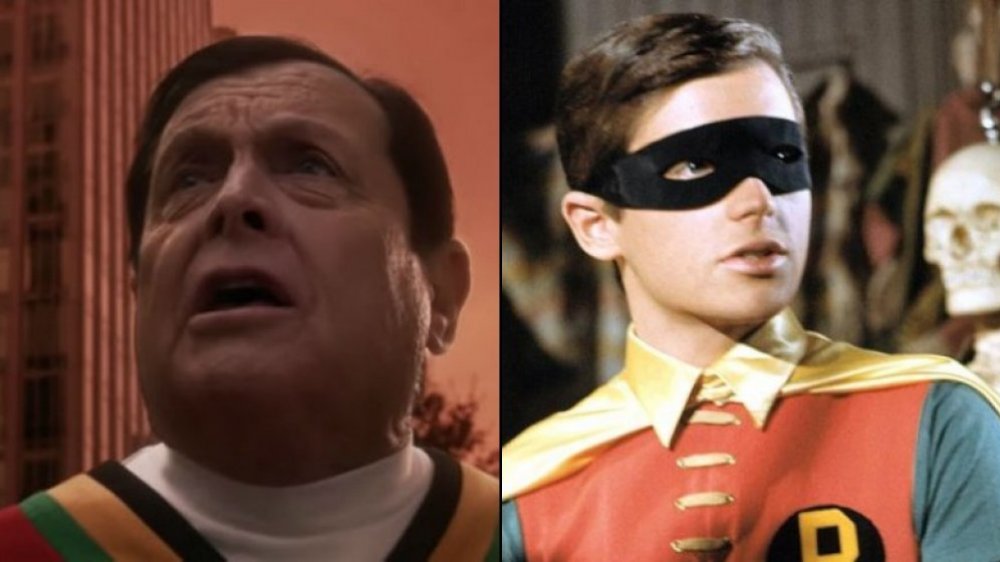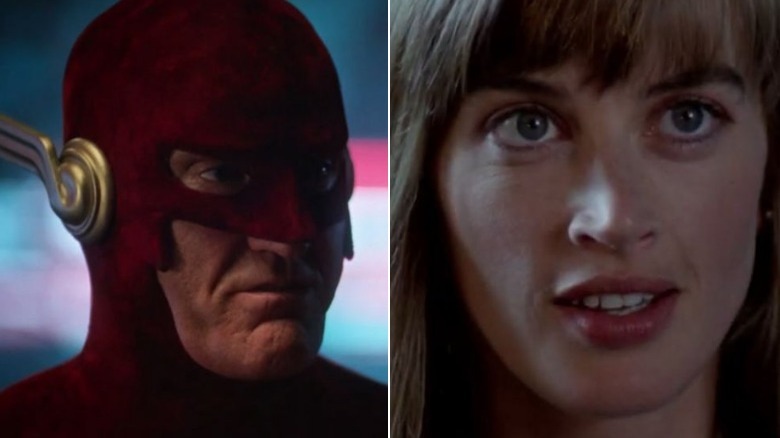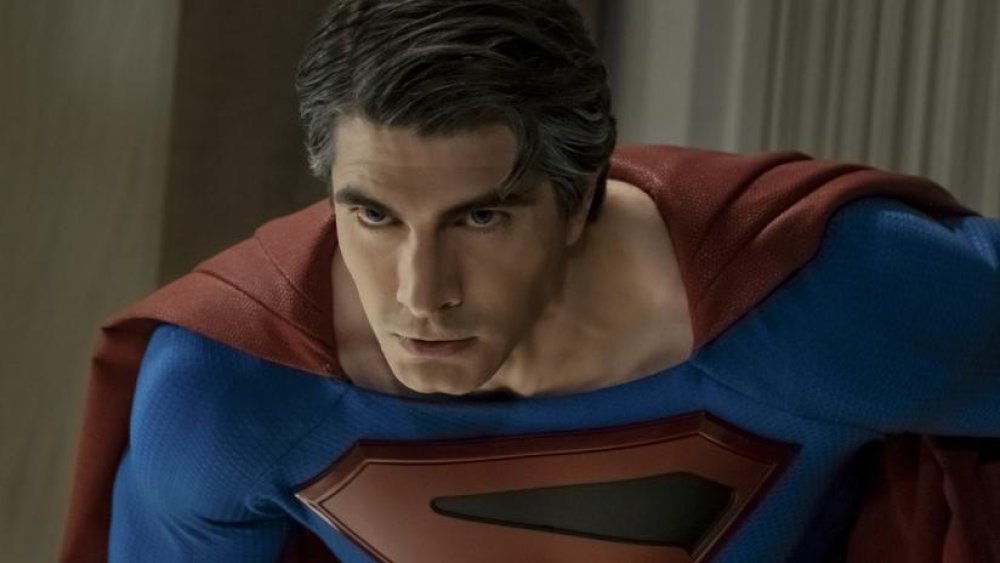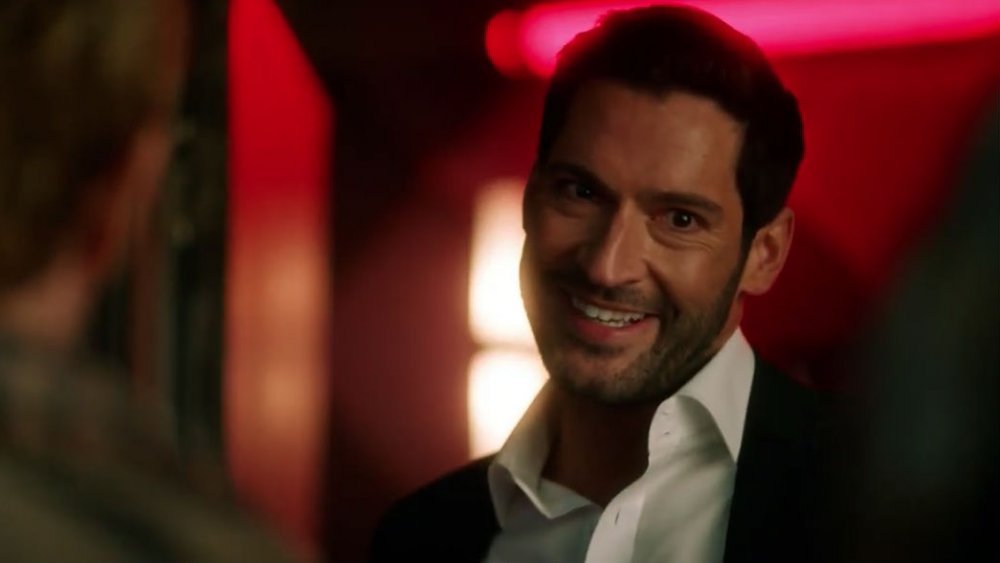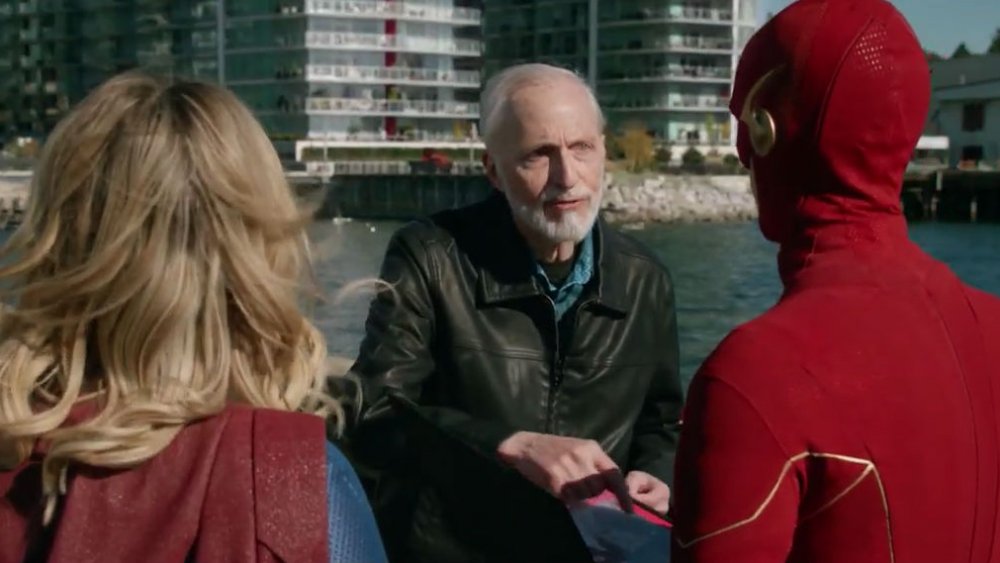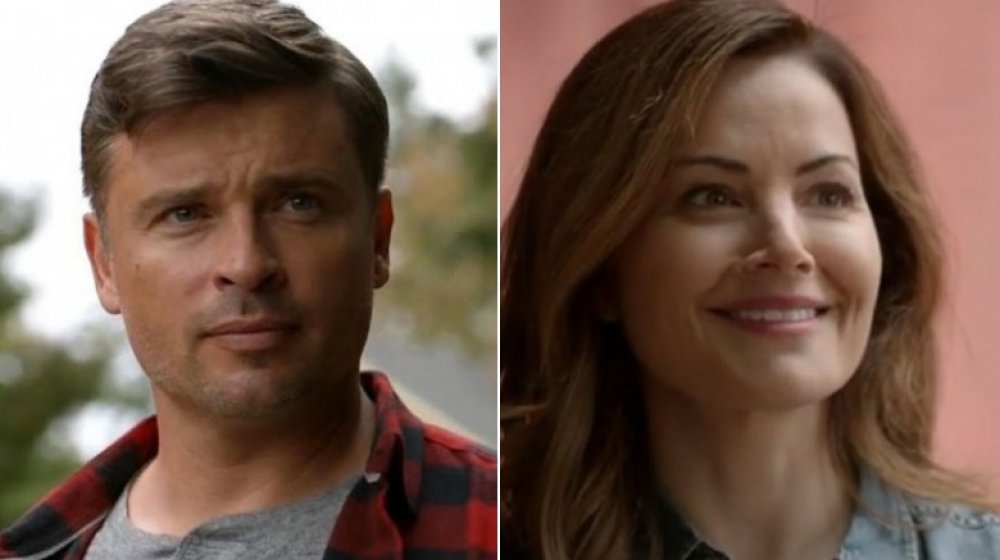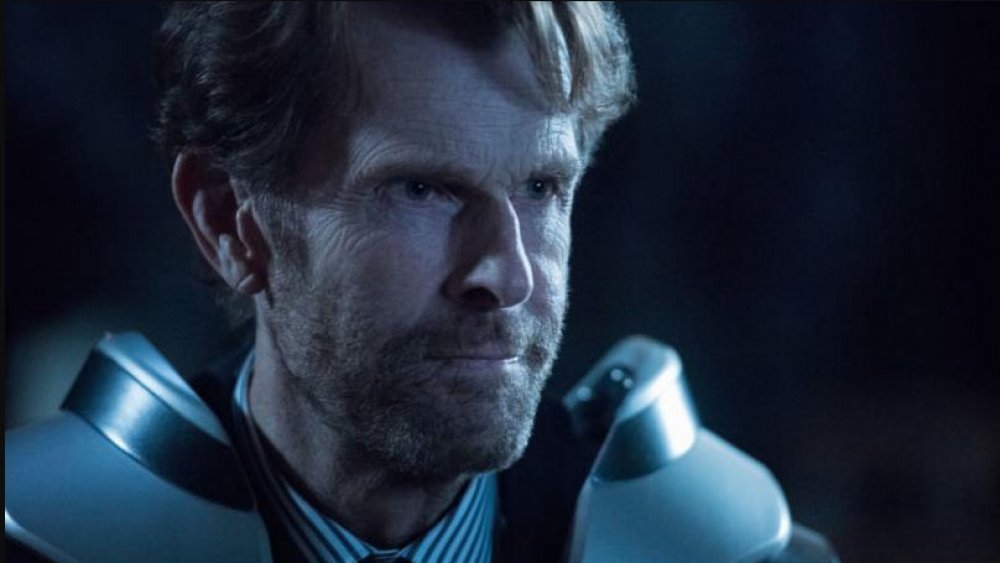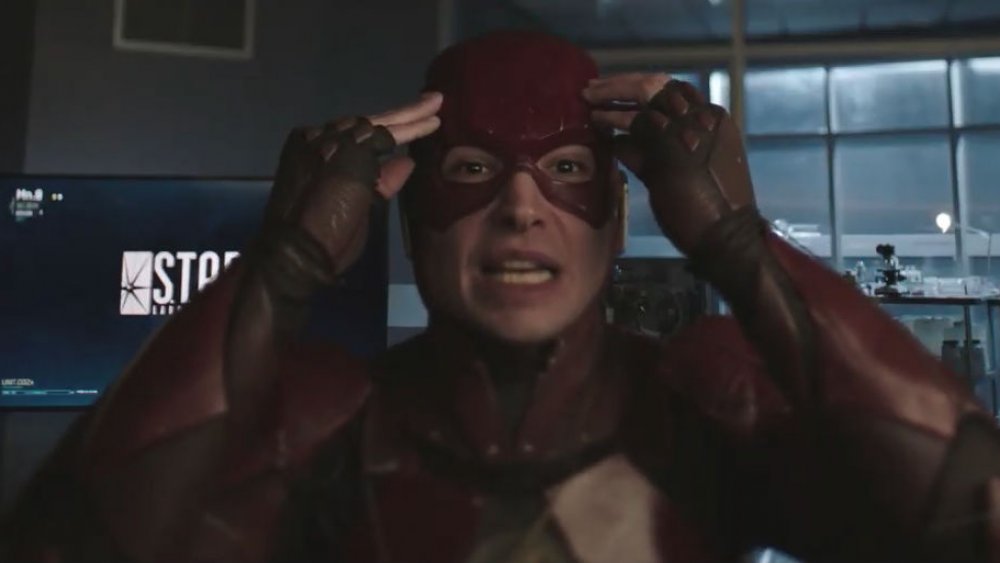Every Crisis On Infinite Earths Cameo Ranked
The CW's superhero event Crisis on Infinite Earths deals with parallel Earths existing in a vast multiverse. While the mid-'80s comic book event that inspired the crossover dealt with parallel narratives from different comics, the creative teams behind the Arrowverse made the brilliant choice of featuring many of the different alternate Earths in its multiverse as places where different movie and TV adaptations of DC Comics have taken place over the past six decades. Earth-66, for example, is where the classic campy '60s Batman series took place. The short-lived Birds of Prey TV is set on Earth-203, the setting of DC Universe's Titans is Earth-9, and Netflix's Lucifer can be found on — quite fittingly — Earth-666.
The crossover's called Crisis on Infinite Earths, but you could replace "Crisis" with "Cameos" and while it might not sound as dramatic, it wouldn't be any less accurate. The CW's 2019-20 spectacle is full of memorable cameos from films and TV from all across DC's multiverse. There are Boy Wonders, disillusioned Dark Knights, quizmasters, retired Supermen, and even former Kings of Hell among the Arrowverse event's many cameos. Ranked from from worst to best, here are all the cameos in Crisis on Infinite Earths.
The Green Lantern Corps make an appearance, just barely
Of the many heroes making appearances in Crisis on Infinite Earths, no versions of Green Lantern appear as part of the main action, but the gathered Corps shows up briefly at the very end of Part 5. When we're given visions of different slices of the restored multiverse, one brings us to Earth-12 — home universe of the 2011 flop Green Lantern. We never see Hal Jordan or any other Corps member up close, but instead get shots from the film including a gathering of the Corps on its home planet Oa.
Whether or not Ryan Reynolds was even approached to reprise his role for Crisis, it's understandable he wouldn't be jumping at the chance to be a part of it. Reynolds has been as vocally critical of the film as anyone, even taking swipes at Green Lantern in both Deadpool movies. It's a credit to the Crisis creators the film gets any nod at all, but considering all of the other amazing cameos in the event, it's hard to not put this one in the bottom spot, especially since it doesn't even include a single clear shot of anyone's face.
Sargon the Sorcerer doesn't live up to the source material
In Crisis Part 5, we meet a refugee from the Golden Age of comics, Sargon the Sorcerer. Just barely getting used to the restored multiverse and Earth Prime, the heroes respond to the giant stuffed doll Beebo rampaging through Star City, only to discover the creature is a diversion. Its creator, Sargon, is distracting the heroes with the faux threat and robs a bank in the process. Once the heroes realize what's going on, Sara Lance makes short work of the criminal magician.
The scene is definitely entertaining, but we give Sargon's cameo such a low spot on the list because having Sargon appear as a bank robber doesn't seem fair treatment of the character's legacy. Debuting in 1941's All-American Comics #26, the version of Sargon from the panels is a hero who actually dies heroically, sacrificing himself along with a group of sorcerers in the original Crisis on Infinite Earths comic book event. It isn't likely to get armies of fans outraged, but considering the source material, having him appear as a bank robber (and not even a particularly good one) is kind of sad.
Swamp Thing has a home in the new multiverse
While his series was canceled before it even got a chance, the powerful elemental hero of DC Universe's short-lived Swamp Thing isn't forgotten in Crisis. At the end of the event's final chapter we visit Earth-19, where the creature that was once Alec Holland relaxes in the Louisiana swamp.
It's regrettable the character couldn't have a bit more to do with the event. In the original comic book crossover, tie-in issues of the Swamp Thing comic proved pivotal to the story. While the main Crisis on Infinite Earths title dealt largely with the cosmic side of the saga, Swamp Thing focused on how the magical side of DC was impacted by the Crisis. Characters like Constantine, Zatanna, and Jason Blood fought their own side of the war on a more mystical battlefield.
Regardless, it was good to see Crisis pay tribute to Swamp Thing — a series that ended far too soon.
The Titans make their CW debut in Crisis
Early in Crisis Part One, we see Hawk (Alan Ritchson) and Jason Todd (Curran Walters) react to the anti-matter wave tearing through the multiverse. We see them each looking at something in the distance which they're clearly not happy about, there are flashes of red, and then we move on to the next Earth.
Now it's undeniably cool that any characters from DC Universe's Titans showed up in the CW's Crisis. After all, Titans is set is unquestionably a much less family-friendly show than regular CW fare, so it isn't like the series blends really well with series like Supergirl or The Flash.
By the end of Part 5, any worriers should be satisfied that the Titans' third season won't fall victim to the events of Crisis. We see Earth-9 restored at the end of the final installment, along with a number of other disparate realities. Just as it is in their appearance in Part 1 of the event, we get mostly stock footage from the DC Universe series rather than brand new material, though it's undeniably cool for Titans to be part of the crossover regardless.
The Doom Patrol celebrates the restoration of the multiverse
The DC Universe's strangest fourth-wall-breaking team isn't forgotten in Crisis. With the multiverse restored, we get a brief taste of Earth-21, where we see the majority of Doom Patrol's cast dancing in front of their mansion. Like most of the cameos from the DC Universe streaming shows in Crisis, it seems clear what we're getting is stock footage rather than new stuff. Still, this cameo rates a bit higher than the others for two reasons.
First, because it sneakily confirms that — even though the team was introduced to DC Universe viewers on Titans — it takes place in a different narrative from Titans. The Doom Patrol is dancing on Earth-21 while the younger Titans are on Earth-9.
Second, because it's a cameo that actually gives us a hint about when to next expect to see new Doom Patrol stories. Most of Crisis' alternate Earths are given significant numbers — usually in regard to release dates. Brandon Routh's Kingdom Come Superman is found on Earth-96, for example, and the mini-series Kingdom Come premiered in 1996. Just as Alexander Knox of 1989's Batman is found on Earth-89. Since we know Doom Patrol premiered in 2019, it's possible — and perhaps even likely — their world is named Earth-21 to let fans know they can expect new episodes in 2021.
The Ray doesn't arrive in time to save Earth-X from the Crisis
Among the worlds we see get wiped out in the cold open of Crisis Part One is Earth-X, a world visited in the Arrowverse's 2017 crossover, Crisis on Earth-X. On Earth-X, the Nazis rule over much of the world and superheroes like Leonard Snart (Wentworth Miller) and his future husband the Ray (Russell Tovey) lead a rebellion against the fascists. Earth-X is eventually freed from the grip of the Nazis, though not without sacrifice. Martin Stein (Victor Garber), one of the two men who make up the hero Firestorm, dies during the conflict.
Unfortunately, after going through so much toil, Earth-X is rewarded by being one of the first worlds to get wiped out by the anti-matter wave in Crisis on Infinite Earths. Moments before the wave hits, we see the Ray flying towards it, helpless to stop it and likely not even knowing what it is. It's good to see the alternate Earths already featured in the Arrowverse remembered, but it's low on the list because — as good as it is to see the Ray — it isn't a particularly surprising addition.
Jim Corrigan has a plan for Oliver Queen in Crisis on Infinite Earths
Stephen Lobo (Colony, Continuum) shows up out of nowhere in Crisis Part Three as Jim Corrigan. The former detective is there, in part, to ruin the heroes' plans, but not in a malicious way.
When we meet Corrigan, the heroes are in Purgatory. After Oliver Queen's death at the end of Crisis Part One, some of the heroes try to find a way to bring him back. They manage to revive his body in Part Two, but without his soul. In the following installment, they've finally found Oliver's soul and he's about to return with them when Corrigan appears.
In the comics, Jim Corrigan long serves as the human host for the Spectre — a powerful spirit of vengeance who in some interpretations is seen literally as the wrath of God. When Corrigan speaks to Oliver, he tells the hero that it's his turn. In Part 4 it's confirmed that Oliver is to be the new host for the Spectre, and he uses the spirit's power to help turn the tide against the Anti-Monitor. Sadly, he's forced to sacrifice himself in the process. Something similar happened in the comics. After Hal Jordan — one of the heroes to use the name Green Lantern — dies in the DC Comics event Final Night, he is eventually tapped to become one with the Spectre.
Ryan Choi brings a human side to the Paragons in Crisis
In Crisis Part Three we meet Ryan Choi (Osric Chau), the Paragon of Humanity. Though he's clearly a brilliant scientist, he doesn't have any kind of super powers or even any super gadgets, so it's initially a mystery as to why he's chosen... unless you're a DC Comics fan, in which case the name might be a little bit more familiar.
In the comics, Ryan Choi replaces Ray Palmer for a time as the shrinking hero Atom in the All-New Atom series. As of Crisis' airing, he's still acting as the Atom on the page, and was in the roster for the 2017-18 Justice League of America series alongside interesting choices like Killer Frost and the interstellar bounty hunter Lobo.
It isn't clear yet whether there are plans for the Choi of Crisis to keep appearing in the Arrowverse or perhaps to some day replace Ray Palmer (Brandon Routh) as the Atom. It is clear, however, that Choi knows who Palmer is. When Palmer, Iris (Candice Patton), and Ralph (Hartley Sawyer) show up to recruit Choi, the scientist instantly recognizes Palmer and is starstruck by the former CEO.
Huntress Gets hit by the anti-matter wave in Crisis on Infinite Earths
While it's clear that most of the alternate Earths we're seeing — along with their heroes — are being devoured by the anti-matter wave, the first hero we actually see dying from the wave in Crisis is Huntress (Ashley Scott) on Earth-203. The hero is jumping across rooftops in New Gotham when the wave hits, talking through an ear piece to someone she calls "Oracle." Unfortunately, they're both just as helpless against the wave as most of the heroes we've seen.
Huntress and Oracle are new to Arrowverse storytelling, but they're not new to TV. Both were part of the short-lived 2002-03 series Birds of Prey. Though we never see her, the voice we hear talking to Scott's Huntress is actress Dina Meyer as Oracle, each reprising their roles from the show. You may know Oracle better as Barbara Gordon, a.k.a. Batgirl. The hero is paralyzed from the waist down after the Joker shoots her — an act lifted from the classic 1988 graphic novel Batman: The Killing Joke.
Leonard Snart shows up for Crisis... kind of
Leonard Snart, a.k.a. Captain Cold, was once one of the regular heroes on Legends of Tomorrow and a recurring character on The Flash. The Earth-1 version of the character dies at the end of Legends' first season, though between time-travel resurrections and alternate Earth Snarts, he continues to pop up in the Arrowverse from time to time. While we haven't seen him yet in Crisis, we have heard him.
When Harbinger (Audrey Marie Anderson) travels to Earth-74 to get that universe's version of the Waverider, instead of the female voice of Gideon — the ship's A.I. on the Earth-1 version — she's greeted by the voice of "Leonard." Fittingly, the ship's only human occupant is Mick Rory, a.k.a. Heat Wave (Dominic Purcell), Captain Cold's old partner in both crime and heroics. The rest of this world's Legends are either dead or retired, and Mick is using the relative quiet of the near-empty Waverider to work on writing romance novels.
We meet a pre-scar Jonah Hex in Crisis on Infinite Earths
Johnathon Schaech has played the recurring role of antihero gunslinger Jonah Hex on Legends of Tomorrow, but when he appears during Crisis Part Two it's with a bit of a twist — he doesn't have his trademark scar. The heroes travel to a North Dakota mine on Earth-18 to find a working Lazarus Pit so they can use it revive Oliver Queen. They end up going back in time far enough that Hex isn't scarred yet, and hasn't yet met Sara Lance (Caity Lotz).
Hex tries to kick the heroes out of the mine, and when they fight back Sara gives Hex at least part of the scar he's known for. She holds him, demanding he give them his permission, and when he refuses she says, "Guess you were going to get this scar eventually," and begins cutting into his face with a knife.
In the comics, Hex's scar comes from a fire and it doesn't look like an injury that a knife would cause all on its own. Still, who knows? Considering the time, Jonah Hex probably doesn't have a first aid kit nearby, so maybe a nasty infection is to blame for the rest.
Wil Wheaton is full of gloom and doom in Crisis on Infinite Earths
No one literally says, "Shut up, Wesley," when Wil Wheaton shows up in Crisis on Infinite Earths Part One shouting about the end of the world, though the spirit of the phrase is heavily implied. The geek icon who once played child prodigy Wesley Crusher on Star Trek: The Next Generation shows up in the beginning of Crisis Part One holding up a sign predicting the end of the world and preaching to his fellow citizens on Earth-38 that not even Supergirl (Melissa Benoist) will be able to save them. His doom and gloom is interrupted mid-sentence by a fire-breathing dragon-like creature, and Wheaton's character is saved only by the quick timely intervention of the Kryptonian hero he was just smack-talking.
Of course, you can breathe as much fire at Wheaton as you want — as annoying as he might be as the self-styled prophet of doom, he's not wrong. Earth-38 is annihilated by the anti-matter wave by the end of the episode, with only about half its population escaping to Earth-1. Though thankfully, Wheaton's gloom and doom isn't completely justified. Once the multiverse is restored, Earth-38 becomes fused with other Earths to become Earth Prime — though we don't see Wheaton or another version of his character to confirm he made the cut for this new world.
The Tick's sidekick is a quizmaster in Crisis
There's one superhero actor cameo in Crisis on Infinite Earths you might miss if you're looking only for actors playing DC characters. When Harbinger recruits Sara Lance and Ray Palmer, they're at a trivia night where they're loss forces Ray Palmer to admit he failed on an off-screen mission. When asked what was the last song Janis Joplin recorded, Sara and Ray correctly answer "Mercedes Benz." The quizmaster tells them they're wrong and that the correct answer is "Little Robot Man." Before Sara can complain, Ray confesses that during a mission when he was apparently supposed to steal a lock of Joplin's hair, the singer saw him and called him "little robot man," hence inspiring a new song that changed history.
But the cameo we're talking about isn't Janis Joplin or even a little robot man, but the guy running the trivia night: Griffin Newman. The actor hasn't played a Justice Leaguer or an Avenger, but he does play Arthur, sidekick to the Tick in the second live-action adaptation of the superhero parody comic. The Tick was revived as an Amazon Prime series with Peter Serafinowicz playing the titular hero and Newman playing his mild-mannered winged partner.
Crisis gives us a preview of Stargirl and the JSA
At the end of Crisis Part 5, we get to see different corners of the restored multiverse, and the first world we visit is Earth-2, where an imposing robot towers over a group of heroes. The robot is Stripe and the heroes are the Justice Society of America — better known simply as the JSA — as they'll appear in the upcoming Stargirl. Along with the titular hero and the robot Stripe, we get to see Doctor Mid-Nite, Hourman, and Wildcat.
It's only a brief shot, but it deserves a higher rank on the list than similarly short cameos because of two reasons. First, it's unique among the cameos in that it's not giving us a reflection of a current series or tugging at our nostalgic heartstrings — it's a preview of a series set to debut later in 2020. Second? Look at that freaking robot! That is a killer shot of an imposing robot. Even someone in Iron Man's Hulkbuster suit might be careful before annoying that thing.
Alexander Knox won't live to write the next big story in Crisis
Superman had the intrepid reporter Lois Lane following his exploits, David Banner of the '70s Incredible Hulk TV series had to contend with the investigations of Jack McGee, and in 1989's Batman the Dark Knight had Alexander Knox (Robert Wuhl) on his tail. No one except fellow journalist Vicki Vale (Kim Basinger) believed in Knox, and we never actually learn if the poor guy's co-workers stop trashing him once the existence of Batman goes from urban legend to common knowledge. But we get to see him once more in one of the first big cameos in the CW's Crisis on Infinite Earths Part One.
During the montage of alternate Earths being hit by the anti-matter wave, we're greeted with Danny Elfman's iconic score as we visit Earth-89 (named for the year Batman was released) where Alexander Knox is sitting on a bench, reading the paper. As the sky turns red from the approaching anti-matter wave, Knox says, "I hope you're watching, big guy," referring to Michael Keaton's rubber-suited Dark Knight. It's a great moment that must have had Batman fans cheering, even if we still don't get to learn if Knox ever got that Pultizer Prize he was always talking about.
Holy cameos! It's Burt Ward!
Sadly, Adam West passed away in 2017, and so he isn't there to greet the anti-matter wave on Earth-66, but Gotham's caped crusader didn't leave it unprotected. Burt Ward, who played Batman's partner Robin the '60s TV show and movie, is walking his dog when Crisis comes for his world.
The Dick Grayson of Earth-66 clearly is older than the young man who fought alongside Batman. They don't force Ward back into his old Robin suit, but the neckline of his shirt is given the classic Robin colors. Even if he doesn't look much like he did all those decades ago, what's amazing is how much he still sounds like his old self. When Ward turns, sees the anti-matter wave approaching and shouts, "Holy crimson skies of death!" you'd recognize the voice even with your eyes closed. It's one of the best cameos of Crisis, even if it must end with the former Robin and his world succumbing to the merciless anti-matter wave.
The Flash and Tina McGee of Earth-90 make heartbreaking appearances in Crisis
One of the most emotionally powerful moments of CW's Crisis on Infinite Earths is death of the Earth-90 Flash, and the Arrowverse's creative team handles the moment perfectly. Played by John Wesley Shipp, the Flash of Earth-90 isn't just a random alternate universe version of the hero — he's meant to be the version of the character from the short-lived Flash series from the early '90s.
The 2018 crossover Elseworlds begins with Earth-90 being destroyed and Shipp's Flash left the only survivor. He disappears later and isn't seen again until Crisis. Not willing to let the Earth-1 Barry Allen (Grant Gustin) sacrifice himself, the Earth-90 Flash temporarily steals the younger hero's speed to stop the anti-matter wave, and he dies in the process.
In his final moments, Earth-90's Flash thinks back to a moment with the love of his life. The show cuts to a scene from the earlier Flash series, with Shipp talking to a lovely young woman. This is Tina McGee, Flash's love interest. To make sure all the fans of the old show are ugly-crying by the end of scene, the old theme is even played during Flash's sacrifice.
The Superman of Earth-96 brings a classic comic to Crisis
One of the unquestionably coolest parts about the Crisis crossover is that we meet a version of Superman from the classic comic Kingdom Come. In this 1996 mini-series, Superman is in self-imposed exile after the Joker kills off most of his friends and loved ones (including Lois Lane) in a gas attack. Soon, the world is filling up with violent and careless superheroes who are wreaking havoc with battles not against villains, but with each other. Of course, Superman eventually comes out of retirement and reforms the Justice League.
His physical presence in the story is echoed in Brandon Routh's Earth-96 Superman, whose gray hair and black in his S insignia are clearly inspired by Kingdom Come. Nothing is mentioned of the conflict Superman endures in Kingdom Come during his Crisis appearance, but his history is very similar. In Crisis, Superman doesn't say the name "Joker," but he says that "the reject from Gotham" killed his loved ones as a sick prank, which sounds like the Joker's M.O.
By the end of Crisis, he's murdered and replaced by Lex Luthor. Fortunately, he's brought back to life by the restoration of the multiverse. In fact, we see the Superman of this world is in a different outfit more closely echoing the costume Routh wears in 2006's Superman Returns. Most noticeably, the new outfit doesn't incorporate the black in his insignia. We aren't told why this happens, though a likely explanation is that the character has found some peace and recovered from his terrible losses.
Lucifer sends the heroes south of Heaven in Crisis
When the heroes need a way to retrieve Oliver Queen's soul in Crisis Part Three, Constantine finds them a way on Earth-666. It's as good a name as any for the world that is home to Lucifer Morningstar, the former devil himself and the star of Netflix's Lucifer. The former ruler of Hell gives the heroes a card that allows them a limited amount of time to travel to Purgatory, retrieve Oliver's soul, and return home.
This version of Lucifer first appeared in the game-changing Neil Gaiman comic Sandman, and later got his own series after he arbitrarily decided he didn't want to rule Hell anymore. The TV adaptation has enjoyed four seasons, first on Fox and later on Netflix, with a fifth and final season confirmed in June 2019.
Tom Ellis' brief appearance as Lucifer gets a high spot on the list for a couple of reasons. First, Ellis is a wonderful actor and the scene proves to be one of the most entertaining of the episode. Second, unlike many of the cameos in the crossover, Lucifer's appearance actually has a pretty big impact on the plot.
Crisis gives the writer of the source material a chance to be a fan
In the beginning of Part 5 of Crisis, we get a cameo that probably went over a lot of viewers' heads — but not those intimately familiar with the source material. Marv Wolfman, the man who actually wrote the original comic book mini-series Crisis on Infinite Earths, gets a short scene with Supergirl and the Flash.
The scene is set shortly after the restoration of the multiverse, and both Supergirl and the Flash are confused, with each believing the other has traveled to their Earth. Fittingly, it's the guy who wrote the source material who clues them in on what's actually happened. As he asks the heroes for autographs, he's the one who lets them know that the two of them, the Legends of Tomorrow, and Batwoman are now all part of the same Earth (later in the episode it's confirmed that Black Lightning's Earth has been fused into the new Earth Prime as well).
Not only is it wonderful that the CW Arrowverse team didn't forget to pay tribute to the makers of the source material, Wolfman's role has more weight than your usual comic book creator cameo. He has more lines than your average Stan Lee cameo in Marvel's flicks (no disrespect meant to the late, great Stan "The Man"), and he's actually kind of important to the plot.
Lois & Clark from Smallville return from Crisis on Infinite Earths
On Earth-167, Lex Luthor (Jon Cryer) and some of our heroes meet the Superman from one of the most successful DC Comics-inspired TV shows of the past few decades. Chopping wood on a farm is Clark Kent (Tom Welling) of the series Smallville. Once all the heroes and villains have left, we learn — not surprisingly — that Clark is still with his beloved Lois (Erica Durance), who is convinced Clark is joking when he tells her what just happened.
The scene that unfolds on Earth-167 is not only one of the best cameos in Crisis, but one of the best scenes in the crossover. Even though Cryer clearly isn't the Lex that the Clark of Smallville had to contend with, the chemistry between them is wonderful. Lex's response when he discovers this version of Superman has given up his powers, the frustration and confusion we see, and his decision to leave Clark unharmed because the hero has "taken all the fun" out of killing him, is just pitch-perfect Lex Luthor.
This is also the only example in Crisis of characters from another series actually showing progress in their story. By the end of Smallville, Clark has finally accepted his role as Superman. Having him retire does more than just give the earlier story a nod — it gives it a whole new ending.
The Bruce Wayne of Earth-99 brings the voice of Batman to Crisis
Ranking the Crisis cameos is obviously a subjective task, and we're never going to all agree on the same choices, but it's tough to not see Kevin Conroy's appearance as an older, darker version of Batman in Crisis Part 2 as a no-brainer for one of the top spots on the list.
This isn't any kind of Batman Conroy's ever played. Even the older, crankier version of Bruce Wayne that Conroy voiced in Batman Beyond isn't nearly as close to rock bottom as this guy. The Batman of Crisis is a fusion of versions of the character from comics like Kingdom Come and The Dark Knight Returns, but with a murderous streak that can't be found even in those dark tales. We eventually learn that the Batman of this world, Earth-99, turned to more lethal means — including eventually murdering Superman. While he wears an exoskeleton like the Batman of Kingdom Come and speaks lines from The Dark Knight Returns, neither of those versions of Bruce Wayne would have ever killed Superman.
To many fans, Conroy is Batman. He's voiced the Dark Knight in numerous animated TV shows, movies, and video games over the past 27 years, starting with Batman: The Animated Series. In all that time, Conroy has never had the opportunity to physically play Batman in a live-action role, and Crisis finally gives him that chance. It's a wonderful moment in the crossover, and feels like one of the best reasons to make something like CW's Crisis.
The Flash meets the Flash and it's perfect
Crisis features some truly epic cameos, and it's genuinely difficult to place something in a spot higher than Kevin Conroy's first live-action appearance as Batman. But, like a lot of the crossover's cameos, we knew Conroy's appearance was coming. No cameo in all of Crisis was handled better than the first (and probably last) meeting between the big screen version of the Flash (Ezra Miller) and the CW's version of the Flash (Grant Gustin).
Ezra Miller, who appears as the Flash in 2017's Justice League along with cameos in other films, comes face-to-face with Grant Gustin's Flash as the latter is traveling through the Speed Force. Neither of them has any idea of how the meeting is possible, and the movie Flash in particular seems completely oblivious. The pair get a somewhat awkward moment appreciating each others' costumes, contributing to one of the funniest and most enjoyable in the crossover, and Miller and Gustin actually share some good chemistry. It's genuinely regrettable that there seems little chance a second meeting could happen (though you never know).
It remains a mystery by the end of Crisis exactly how this meeting is possible, since all of the multiverse has supposedly been annihilated, and presumably that would include whatever alternate Earth the big screen Flash claims as home. One possible explanation is that their presence in the Speed Force makes it happen, since that mysterious space tends to have a nonlinear relationship with time.
